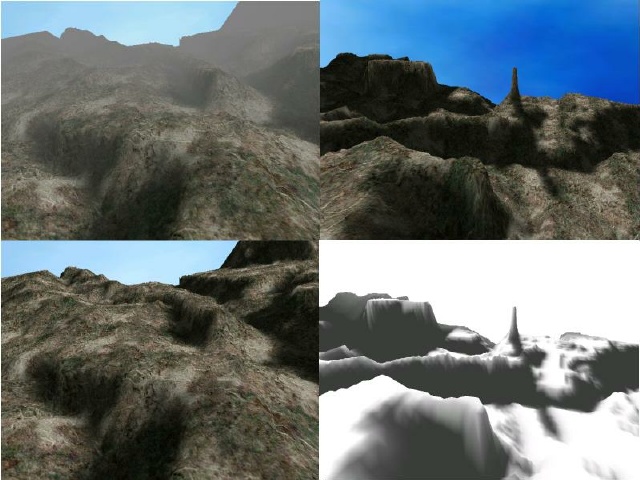 |

Submitted by , posted on 13 July 2001
|
 |

Image Description, by

These are screenshots from a terrain engine I am working on.
I started with the ROAM algorithm but found the vertex popping a
little irritating and discarded it.
This is a simple quadtree (ish) algorithm (no LOD whatsoever) I
implemented in about 2 days.
I have used something I like to call coherent frustum culling.
The lighting is precalculated and the shadowmap is ultra low-res
with 1 pixel/sample.
I havent measured the fps but it feels ok on my Celeron 400
/64MB/i810.
I know the texturing is awful (its a texture tiled on the
landscape). I just put it together to send my first iotd ;)
I am working on a texture synthesizer at the moment and am toying
with the idea of using the ROAM algo to create static optimal meshes.
--Darshan Patil
|
|

